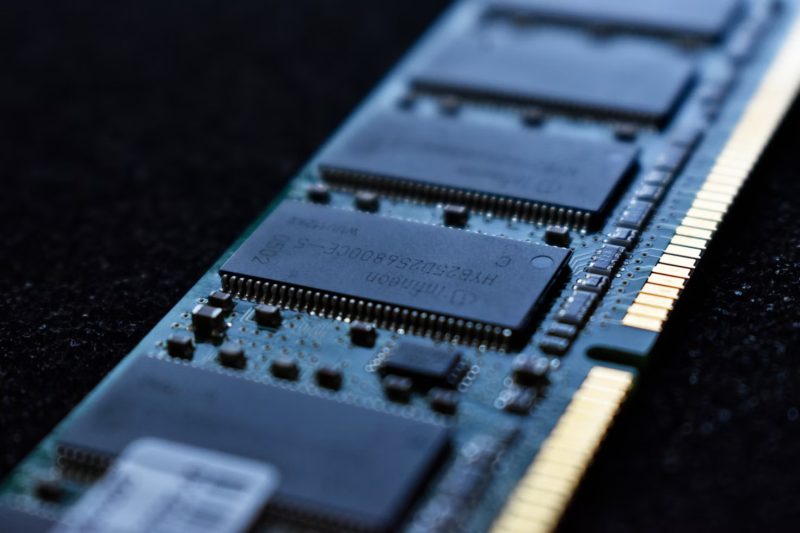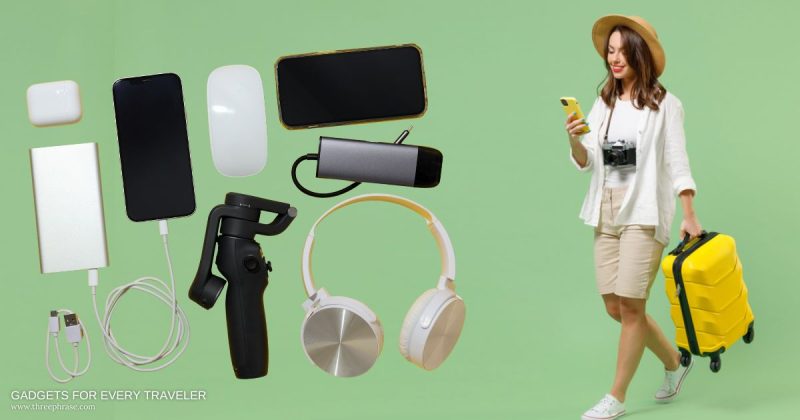Discover the High-Quality Features to Check in Your Gadget!

Choosing a new gadget is exciting. It can be a significant investment, whether buying a new smartphone, tablet, or laptop. However, making the right choice is essential to ensure you get the best performance, value, and longevity from your device. We’ve all had that moment of regret after purchasing something that didn’t live up to its expectations. Dealing with a low-quality gadget can be frustrating, whether it’s lagging performance, poor battery life, or connectivity issues. That’s why checking specific features before purchasing can save you from unnecessary headaches later.
In this blog, I’ll walk you through some high-quality features to check in your gadget. From performance to design and brand reputation, there’s more to consider than just aesthetics. Let’s explore these essential factors to help you make a well-informed decision for your next tech purchase!
Quality Features to Check in Your Gadget
Performance and Functionality
Performance is the heart of any gadget. Whether you’re a casual user or rely on your device for work or gaming, ensuring it performs well under different conditions is crucial. A sluggish device can be incredibly frustrating, especially when you need it to keep up with demanding tasks. Here are a few essential aspects of performance you should keep an eye on.
Processing Power
The processor is essentially the brain of your gadget, and just like us, gadgets need a solid brain to handle multitasking and demanding tasks smoothly. A powerful processor ensures that your device runs applications faster, minimizes lag, and provides a smooth overall experience. Think of it like cooking – a high-end processor is like having enough heat to cook your food quickly without burning it. For example, a device with a powerful processor won’t slow you down when opening multiple apps, streaming, and responding to emails simultaneously.
Processors like Apple’s A-series chips or Qualcomm’s Snapdragon series are reliable for smartphones and tablets. For laptops, look for Intel’s Core i5 or i7 processors or AMD’s Ryzen series if you want something that can handle heavier workloads.
RAM (Random Access Memory)
 RAM is often paired with the processor to ensure your device can manage several tasks simultaneously. The more RAM your gadget has, the smoother it will be when switching between apps, browsing with multiple tabs open, or playing graphic-heavy games. Without sufficient RAM, your gadget might start freezing or lagging when too much is happening simultaneously.
RAM is often paired with the processor to ensure your device can manage several tasks simultaneously. The more RAM your gadget has, the smoother it will be when switching between apps, browsing with multiple tabs open, or playing graphic-heavy games. Without sufficient RAM, your gadget might start freezing or lagging when too much is happening simultaneously.
For instance, if you’re a gamer or video editor, you’ll need at least 8GB to 16GB of RAM to avoid frustrating slowdowns. For a smartphone, 4GB to 6GB is generally enough for most users, but if you’re using it for intensive apps like mobile gaming or video editing, opting for 8GB or higher could make all the difference.
Storage
Storage is another vital feature that directly impacts your experience. You don’t want to run out of space when downloading a critical app or saving an important file. Gadgets typically offer two types of storage: internal (built-in) and expandable (via SD cards or external drives). Depending on your needs, aim for a device with enough internal storage to accommodate your apps, photos, videos, and other files.
A good smartphone baseline is 64GB, but if you tend to store a lot of media or large apps, opting for 128GB or 256GB is a wiser choice. Laptops with SSD (Solid State Drives) rather than traditional hard drives offer quicker boot times and better overall performance, so always go for at least 256GB SSD for a reliable experience.
Battery Life
There’s nothing worse than being out and about, only for your gadget to die when you need it the most. Battery life is crucial, especially for people constantly on the go. Whether it’s a smartphone that must last through the day or a laptop that can handle long work sessions without being tethered to an outlet, long-lasting battery life is a top priority for many users.
When buying a device, consider its battery capacity and how it’s optimized to manage power efficiently. Features like fast charging and battery-saving modes are also worth looking into. Check product reviews to see how the battery performs in real-world conditions. While manufacturers often advertise specific numbers, users’ experiences will give you a more accurate idea.
Design and Build Quality
 A gadget’s performance is essential, but design and build quality are equally important in your overall experience. After all, you’ll be using this device day in and day out, so it should feel good in your hands and stand up to the wear and tear of everyday life. A well-designed gadget enhances usability and adds a touch of personal satisfaction when you use it. From sleek finishes to sturdy materials, the right design can make all the difference in comfort and durability.
A gadget’s performance is essential, but design and build quality are equally important in your overall experience. After all, you’ll be using this device day in and day out, so it should feel good in your hands and stand up to the wear and tear of everyday life. A well-designed gadget enhances usability and adds a touch of personal satisfaction when you use it. From sleek finishes to sturdy materials, the right design can make all the difference in comfort and durability.
Material
The material your gadget is made from significantly impacts its durability and aesthetics. Premium materials like aluminum, stainless steel, and glass give devices a sleek look while sturdy enough to withstand drops or knocks. On the other hand, gadgets made primarily of plastic might feel cheaper and are more prone to damage over time.
For example, flagship smartphones often come with Gorilla Glass for their screens, which helps protect against scratches and cracks. Devices made from metal or glass backs may look more premium but can also be slippery, so consider adding a case if you’re concerned about durability.
Ergonomics
A gadget’s design should be more than just pretty – it must be comfortable for long periods. Whether it’s a smartphone, tablet, or laptop, the ergonomics of a device directly affect how enjoyable it is to use. Gadgets that are too heavy have awkward button placement or are challenging to hold, leading to hand fatigue and an overall less satisfying experience.
Laptops with ergonomic keyboards, for instance, reduce strain during extended typing sessions. Smartphones with curved edges or matte finishes offer a more comfortable grip. If possible, try out an in-store device to see how it feels in your hands.
Build Quality
A well-built gadget will last longer and perform better in the long run. Build quality refers to how well the components are put together and how sturdy the device feels. Does the screen flex too much when you press it? Do the buttons feel solid or flimsy? Are the hinges on a laptop strong enough to survive regular use?
Pay attention to these small details, as they will give you an idea of how durable the gadget will be over time. No one wants to deal with a device that starts falling apart after just a few months of use.
Features and Connectivity
When spending good money on a gadget, you want to ensure it has the right features to meet your needs. This consideration is where customization comes into play. Depending on your personal preferences, you may prioritize certain features over others, such as camera quality, screen resolution, or wireless connectivity.
Essential Features
Think about what you use your gadget for the most. If you’re into photography or social media, you’ll want a smartphone with a high-quality camera and great editing tools. If you’re a frequent traveler, a laptop with multiple connectivity ports, a solid webcam, and Bluetooth capability may be crucial.
For instance, display resolution is something that many overlook but can significantly affect your experience. A higher resolution ensures crisper, more detailed images. So, if you watch many videos or edit photos, you’ll want to ensure the gadget has a top-tier screen – look for Full HD (1920×1080) or 4K resolution for the best experience.
Future-Proofing
Technology changes rapidly and buying a gadget that’s already outdated or incompatible with future advancements can be costly. When shopping for a new device, consider future-proofing it by ensuring it supports the latest standards. Features like 5G connectivity, USB-C charging, or compatibility with future software updates are things to consider.
For instance, with the rise of smart home devices, having a gadget that can easily connect to your other tech (like smart speakers, TVs, and home security systems) might be worth considering. Also, watch for software updates – a device that no longer receives updates might miss out on new features and become vulnerable to security risks.
Brand Reputation and Customer Reviews
Even with all the fancy features, every gadget needs to be fixed. It is where brand reputation and customer feedback come into play. A reputable brand typically means better quality control, more reliable customer support, and often a longer lifespan for your device.
Brand Reliability
Buying from a well-known brand often means getting a product that’s been rigorously tested and is less likely to suffer from issues like hardware failures or buggy software. Reputable brands also tend to have more responsive customer service, so if something goes wrong, you’ll likely have an easier time fixing it.
Companies like Apple, Samsung, and Lenovo have built their reputations over years of delivering consistent quality, so you know you’re investing in a product designed with care.
Customer Feedback
Finally, always check customer reviews before committing to a purchase. Real-world feedback from other users can provide valuable insight into the gadget’s performance, especially after several months of use. People often mention things that product specs don’t tell you, like how the battery performs over time, if the screen is prone to scratches, or if the software has glitches.
Browse reviews on multiple platforms, like Amazon, Best Buy, or tech forums, to get a balanced view. Pay close attention to recurring complaints, as they can signal a potential issue with the product.
Final Thoughts
Choosing a suitable gadget involves more than just picking the latest model or the one that looks the coolest. You can get a high-quality product that suits your needs by focusing on essential factors like performance, design, and brand reputation. Remember, a powerful processor, ample storage, sturdy build quality, and features that fit your lifestyle are the key ingredients to a satisfying gadget experience.
Before making any purchase, take the time to compare different options, read user reviews, and consider how future-proof the device is. Technology is constantly evolving, and you want a gadget that meets your needs today and continues to do so in the future. So, next time you’re in the market for a new device, be smart about your purchase – your future self will thank you!




